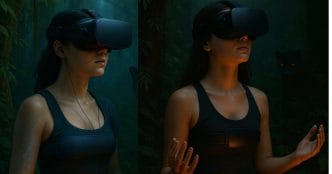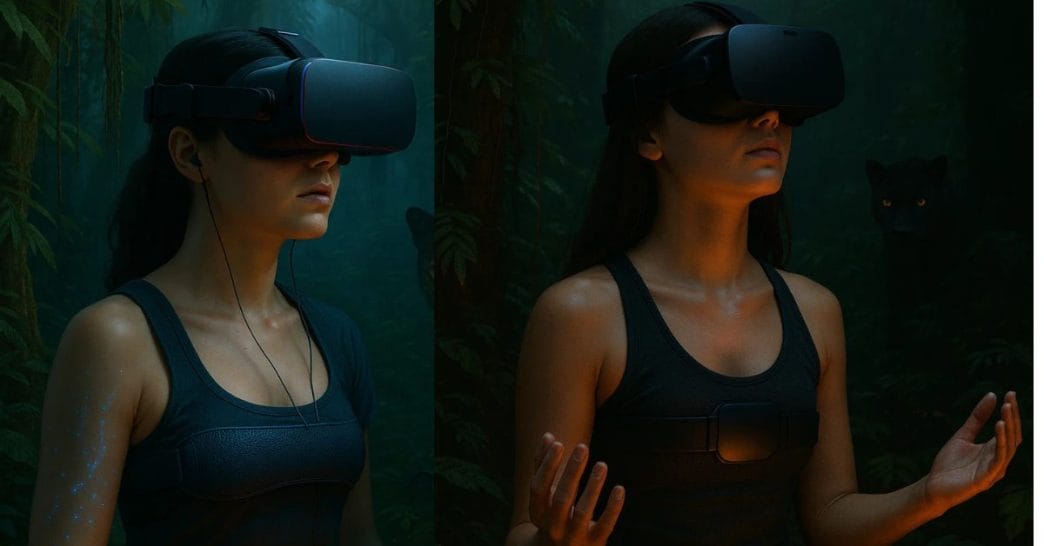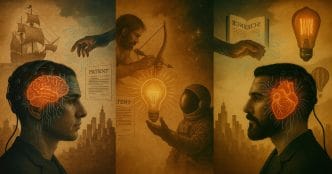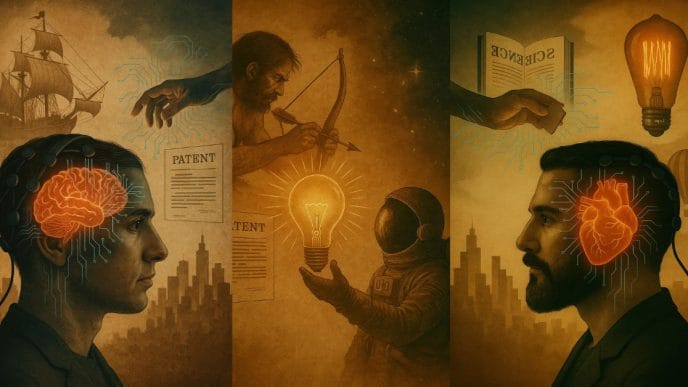A Ritual in Code
The headset was heavier than she expected. The facilitator, part software engineer and part experience guide, slid it into place over her eyes, checking the fit like a jeweler adjusting a crown.
The room fell away. In its place stood a rainforest rendered in impossible clarity. Vines trembled as if in anticipation. Shadows breathed. The low drumbeat matched her pulse because the haptic band on her chest was synced to her heart rate. Her fingers tingled with the faint buzz of a feedback loop triggered by her rising alpha brainwaves.
Somewhere in the jungle, a jaguar’s eyes gleamed. Somewhere outside the simulation, an AI engine adjusted the pitch of the soundscape, nudging her towards a theta state often associated with deep meditation and dream-like experiences, though brainwave correlations with subjective states are more nuanced than a simple one-to-one mapping.
This was no ordinary meditation. This was digital shamanism. A ritual not chanted, but coded.
Ancient Meets Silicon
For most of human history, mysticism has been local and embodied. It was rooted in the smell of burning sage, the sound of skin on drum, and the heat of bodies gathered around a fire. Today, tech startups and research labs are grafting those sensory languages onto silicon.
A biofeedback loop now acts as the new oracle:
- EEG headbands measure shifts in brain activity.
- HRV sensors catch microchanges in breath.
- AI translates those invisible patterns into changes in the virtual ceremony.
The forest grows denser when her focus drifts. The drum quickens when her heart races.
Haptics make the intangible tangible. A shiver runs up her spine when the “spirit” arrives, not because she imagines it, but as an artistic framing for what in reality is a Teslasuit actuator firing in sync with a sonic swell, a capability demonstrated in audio-synced haptic demos.
The intention is the same as an ancient chant, to guide the participant into an altered state, but here the guide is an algorithm.
Neurotheology: The Code Behind the Sacred
Neuroscientists call it neurotheology, the study of how mystical states appear in the brain. In lab settings, they see common patterns such as:
- Suppressed activity in the default mode network.
- Bursts of gamma waves.
- Neurotransmitter spikes that mimic psychedelic trips.
Digital shamanism borrows from that map. Developers feed real-time biometric data into models trained to recognize patterns that some researchers associate with altered or transcendent states, although there is no universally accepted biometric fingerprint for “transcendence.”
If the EEG shows too much beta activity, which is linked to stress:
- The system slows the visual flow.
- Shifts to warmer tones.
- Softens the sound.
If the participant’s HRV suggests deep relaxation:
- The simulation deepens with more fractal blooms.
- More spatial audio cues.
- More tactile “energies” crawling over the skin.
Where a traditional shaman would read your breath or your eyes, the digital shaman reads your data.
Consumer Psychedelia: Retreats Without Leaving Home
This is no longer confined to research labs. A wave of consumer-facing platforms is turning spiritual tech into something you can subscribe to.
Imagine an app that acts as your psychedelic guide without the psychedelics. Its voice is not human but tuned by AI to sound like something both familiar and ancient. It knows your meditation habits, your stress triggers, and your sleep rhythms. It uses that to craft a bespoke journey, in real time, every time.
Or picture a digital ayahuasca retreat where participants across the world sync their biometrics so their heartbeats align in a shared virtual space. You see the pulse of the group as a glowing aurora above you. You breathe together. You descend together.
Some startups already exploring this space include:
- TRIPP: VR meditation with biofeedback-driven environments.
- Muse: EEG headband for meditation tracking.
- Meta: Patents for emotion-responsive VR environments.
It is as if Burning Man, the Amazon rainforest, and a machine learning lab merged into one downloadable experience.
The Risks: Sacred Code or Spiritual SaaS?
But here is the uncomfortable question. When you turn a sacred tradition into a subscription service, what happens to its soul?
Potential concerns include:
- Cultural appropriation: Indigenous rituals being flattened into commercial products.
- Loss of meaning: Rituals reduced to repeatable, gamified content.
- Psychological safety: Intense altered states without adequate support systems.
- Ethical ownership: Questions about who holds the rights to digitized ceremonies.
Indigenous rituals are deeply embedded in community ethics, cosmology, and responsibility. When ported into VR, they can easily become cultural appropriation packaged as entertainment. A ritual that was once a rite of passage can be flattened into a content experience you can pause, skip, or replay.
Spirituality as Software
The woman removes the headset. Her pulse is steady and her cheeks are wet with tears. She cannot tell if she has been gone twenty minutes or two hours. Was it real? Does it matter?
This is the paradox of digital shamanism. Authenticity is no longer about where the drumbeat came from, but what it does to you. The line between ritual and software blurs. Spirituality becomes something you can code, deploy, and A/B test.
And yet, if transcendence is about opening new ways of seeing, perhaps the medium does not matter. What matters is that it is done with respect, consent, and intention.
Action Points for Builders of Spiritual Tech
- Design for integration, not just immersion. Build in grounding sequences, journaling prompts, or live facilitator options.
- Collaborate with cultural custodians to avoid appropriation and flattening of traditions.
- Layer personalization carefully. Avoid overwhelming users with too much biometric-driven change too quickly.
- Test with diverse audiences to ensure inclusivity and accessibility.
- Embed transparency into the experience so users know exactly how their data is being collected and used.
We have reached a moment in history where the sacred is no longer bound by geography or physical community. With headsets and haptic suits, anyone can step into a rainforest vision or a temple of light without leaving their apartment. This is liberation for some and dilution for others.
The next sacred frontier will not be about choosing between tradition and technology. It will be about weaving them together in a way that honors both the ancient roots and the modern tools.
Digital shamanism challenges us to redefine authenticity in an age where code can make you cry, and algorithms can lead you to awe. Whether that future is one of true connection or just another app in the feed will depend entirely on the intentions of those who build it.















